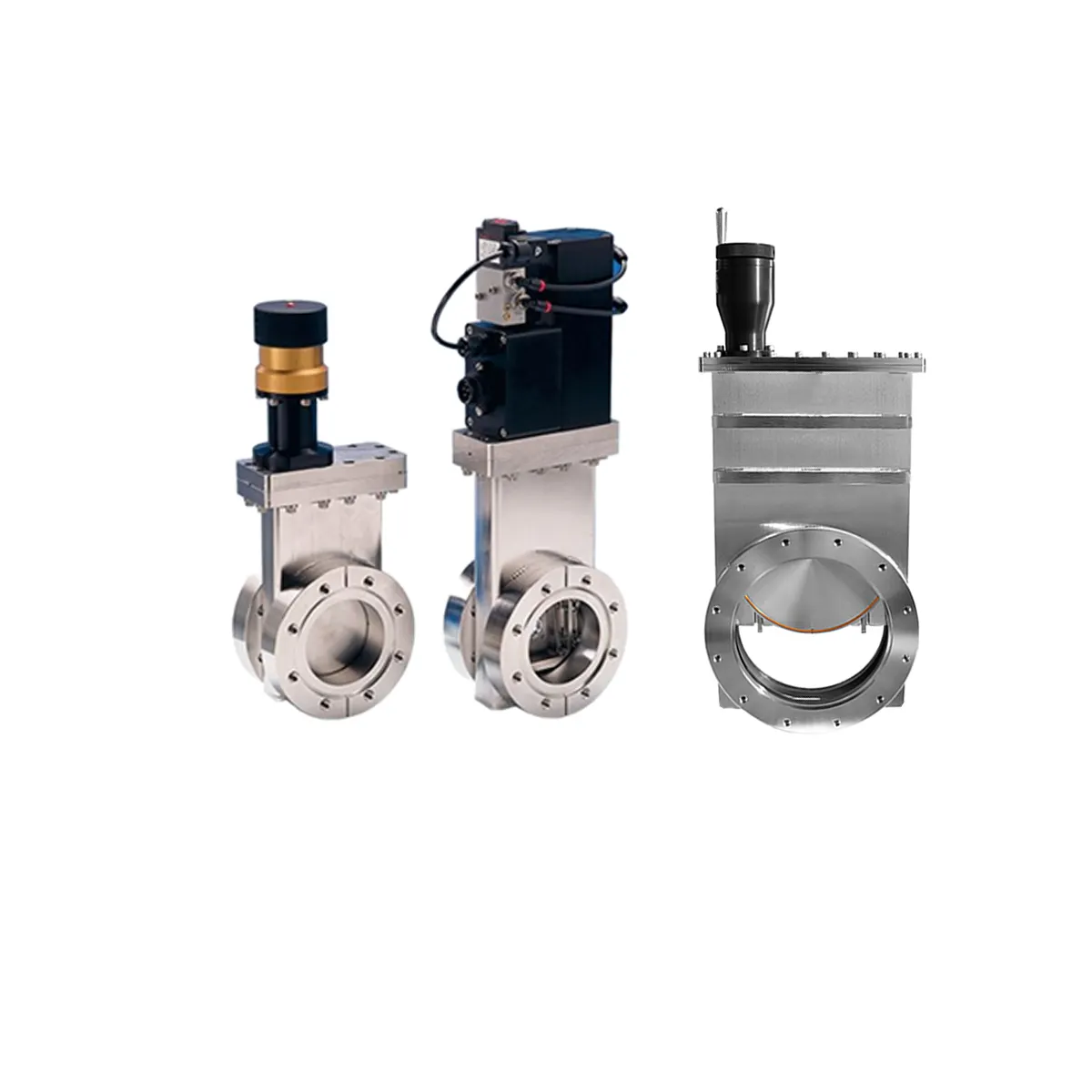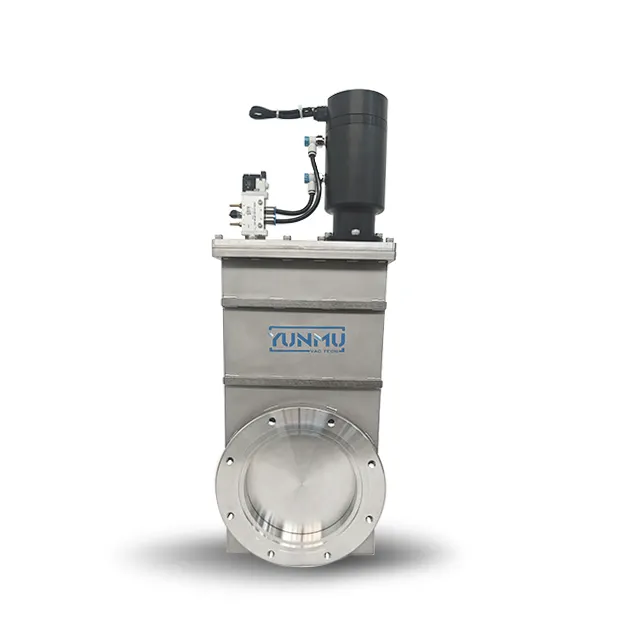산업용 진공 게이트 밸브 선택 시 필수 고려 요소
올바른 것을 선택 진공 게이트 밸브 는 진공 시스템의 효율성과 신뢰성에 상당한 영향을 미칠 수 있는 중요한 결정입니다. 이러한 특수 밸브는 다양한 산업 응용 분야에서 유량 조절, 압력 유지 및 시스템 무결성을 보장하는 데 핵심적인 역할을 합니다. 새로운 진공 시스템을 설계하거나 기존 장비를 업그레이드하든, 진공 게이트 밸브 선택 시 고려해야 할 주요 사항들을 이해하면 최적의 성능과 내구성을 제공하는 현명한 결정을 내리는 데 도움이 됩니다.
기술 사양 및 성능 요구사항
작동 압력 범위 및 진공 수준
운전 압력 범위는 진공 게이트 밸브를 선택할 때 아마도 가장 기본적인 고려 사항입니다. 다양한 응용 분야에서는 대기압에서 초고진공(UHV) 조건에 이르기까지 다양한 수준의 진공이 필요합니다. 진공 게이트 밸브는 시스템의 무결성을 해치지 않으면서 필요한 진공 수준을 유지할 수 있어야 합니다. 시스템이 달성해야 하는 최종 압력과 밸브가 작동 중 견뎌내야 하는 압력 차이를 모두 고려해야 합니다.
최신 진공 게이트 밸브는 특정 압력 범위를 처리하도록 설계되어 있으며, 시스템 요구 사양에 부합하는 제품을 선택하는 것이 중요합니다. 예를 들어, 반도체 제조와 같이 초고진공 조건이 필요한 경우, 10^-9 토르 또는 그 이상의 압력 등급을 갖춘 진공 게이트 밸브가 필요합니다. 반면에 요구 조건이 낮은 응용 분야에서는 보다 낮은 진공 수준을 위한 밸브로도 충분할 수 있습니다.
재질 적합성 및 구성
진공 게이트 밸브를 제작하는 데 사용되는 재료는 공정 매체와 작동 환경 모두와 호환 가능해야 합니다. 화학 저항성, 온도 내성 및 탈기 특성과 같은 요소들을 고려해야 합니다. 스테인리스강은 우수한 부식 저항성과 낮은 탈기 특성 덕분에 일반적으로 사용되지만, 특정 응용 분야에서는 다른 재료가 더 적합할 수 있습니다.
씰 재료는 특히 중요하며, 밸브의 성능과 수명에 직접적인 영향을 미칩니다. 일반적인 씰 재료로는 Viton, EPDM 및 금속 씰이 있으며, 각각 고유의 장점과 한계를 가지고 있습니다. 금속 씰 진공 게이트 밸브는 비용이 더 들지만 고온 및 초고진공(UHV) 응용 분야에서 탁월한 성능을 제공합니다.

디자인 특징 및 작동 고려사항
구동 방식 및 제어 옵션
밸브 작동 방식은 시스템 운영 및 유지보수 요구사항에 상당한 영향을 미칠 수 있습니다. 수동, 공압, 전기 액추에이터가 일반적인 옵션이며 각각 고유의 장점이 있습니다. 수동 작동은 간단하고 신뢰성이 높지만 운영자의 개입이 필요합니다. 공압 액추에이터는 빠른 동작이 가능하며 자동화 시스템에 적합하고, 전기 액추에이터는 정밀한 제어와 위치 피드백 기능을 제공합니다.
제어 인터페이스 요구사항을 고려하고 밸브가 기존 제어 시스템과 통합되어야 하는지 여부를 검토하십시오. 최신 진공 게이트 밸브는 종종 위치 지시계, 리미트 스위치 및 다양한 제어 옵션을 갖추고 있어 시스템 모니터링 및 자동화 기능을 향상시킬 수 있습니다.
정비 접근성 및 서비스 용이성
정비 요구 사항 및 서비스의 용이성은 선택 과정에서 중요한 고려 사항이어야 합니다. 일부 진공 게이트 밸브 설계는 라인 내 정비가 가능하지만, 다른 유형은 시스템에서 분리하여 정비해야 합니다. 씰 및 기타 마모 부품의 접근 용이성과 정비 주기를 고려하십시오.
제조업체로부터의 예비 부품 가용성과 기술 지원도 결정에 반영되어야 합니다. 잘 설계된 밸브는 부품 접근성이 뛰어나 수명 기간 동안 정비로 인한 가동 중단 시간과 관련 비용을 크게 줄일 수 있습니다.
설치 및 시스템 통합
물리적 치수 및 장착 요구사항
진공 게이트 밸브의 물리적 크기와 장착 구성은 시스템의 공간 제약 및 연결 요구사항과 호환되어야 합니다. 밸브의 면간 거리(Face-to-face dimension), 플랜지 종류 및 장착 방향을 고려하십시오. 일부 응용 분야에서는 수직 또는 수평 설치를 위해 특별한 장착 고려사항이 필요할 수 있습니다.
밸브 작동 및 유지보수를 위한 공간 확보에 주의하십시오. 일부 진공 게이트 밸브는 공간이 제한된 시스템에 이상적인 소형 설계를 갖추고 있는 반면, 다른 밸브는 액추에이터 이동이나 제어 부품을 위해 추가 공간이 필요할 수 있습니다.
연결 유형 및 표준 준수
진공 게이트 밸브는 ISO, CF, KF 플랜지 등 다양한 연결 유형으로 제공됩니다. 선택한 밸브의 연결 방식이 시스템 요구 사양과 일치하고 관련 산업 표준을 준수하는지 확인하십시오. 적절한 통합을 위해 추가 어댑터나 맞춤 피팅이 필요한지 고려하십시오.
표준 준수는 규제가 있는 산업 분야 또는 특정 인증 요건을 충족해야 하는 경우 특히 중요합니다. 해당 밸브가 적용 가능한 산업 표준을 충족하고 귀하의 용도에 적합한 인증을 보유하고 있는지 확인하십시오.
비용 고려 사항 및 장기적 가치
초기 투자 비용 대 생애주기 비용
초기 구매 가격이 중요하지만, 유일한 재정적 고려 사항이 되어서는 안 됩니다. 설치, 유지보수, 에너지 소비 및 잠재적인 다운타임 비용을 포함한 총 소유 비용을 계산하세요. 더 높은 품질의 진공 게이트 밸브는 프리미엄 가격을 요구할 수 있지만, 신뢰성 향상과 유지보수 필요성 감소를 통해 더 나은 가치를 제공할 수 있습니다.
다양한 제조업체가 제공하는 예상 서비스 수명과 보증 조건을 고려하세요. 긴 보증 기간은 종종 제조업체가 자사 제품의 신뢰성에 대해 자신감을 가지고 있음을 나타내며, 추가적인 가치 보호를 제공할 수 있습니다.
시스템 효율성에 대한 성능 영향
선택한 진공 게이트 밸브의 성능 특성은 전체 시스템 효율성에 상당한 영향을 미칠 수 있습니다. 다양한 옵션을 평가할 때는 전도도, 사이클 시간, 신뢰성 등의 요소를 고려하십시오. 더 나은 유동 특성이나 빠른 사이클링 속도를 제공하는 밸브는 초기 비용이 더 높더라도 향상된 시스템 성능을 통해 그 비용을 정당화할 수 있습니다.
에너지 효율성 또한 특히 빈번한 사이클링 작동이 이루어지는 시스템의 경우 반드시 고려되어야 합니다. 일부 진공 게이트 밸브는 장기적으로 운영 비용을 절감할 수 있는 에너지 절약 설계를 채택하고 있습니다.
자주 묻는 질문
진공 게이트 밸브는 얼마나 자주 정비해야 하나요?
진공 게이트 밸브의 정비 주기는 운전 조건, 사이클 빈도 및 환경 등 여러 요인에 따라 달라집니다. 일반적으로 제조업체는 6~12개월마다 점검을 실시하고, 1~2년마다 또는 특정 사이클 수 이후에 패킹을 교체할 것을 권장합니다. 그러나 고빈도 사이클링 작업이나 열악한 환경에서는 보다 빈번한 유지보수가 필요할 수 있습니다.
진공 게이트 밸브의 교체가 필요한 신호는 무엇인가요?
주요 징후로는 진공 성능 저하, 펌프 다운 시간 증가, 들리는 누출 소리, 작동 시 어려움 또는 씰이나 부품의 가시적인 손상 등이 있습니다. 정기적인 누출 테스트와 성능 모니터링을 통해 시스템 고장 발생 전에 잠재적 문제를 조기에 발견할 수 있습니다.
진공 게이트 밸브를 내부에서 수리할 수 있나요?
기본적인 유지보수 및 씰 교체는 일반적으로 훈련된 기술자에 의해 내부에서 수행할 수 있지만, 복잡한 수리는 제조업체 공장 서비스가 필요할 수 있습니다. 내부 유지보수를 성공적으로 수행하려면 적절한 교육, 문서화 및 청정 작업 환경이 필수입니다. 일부 제조업체는 유지보수 담당자를 위한 교육 프로그램을 제공합니다.

